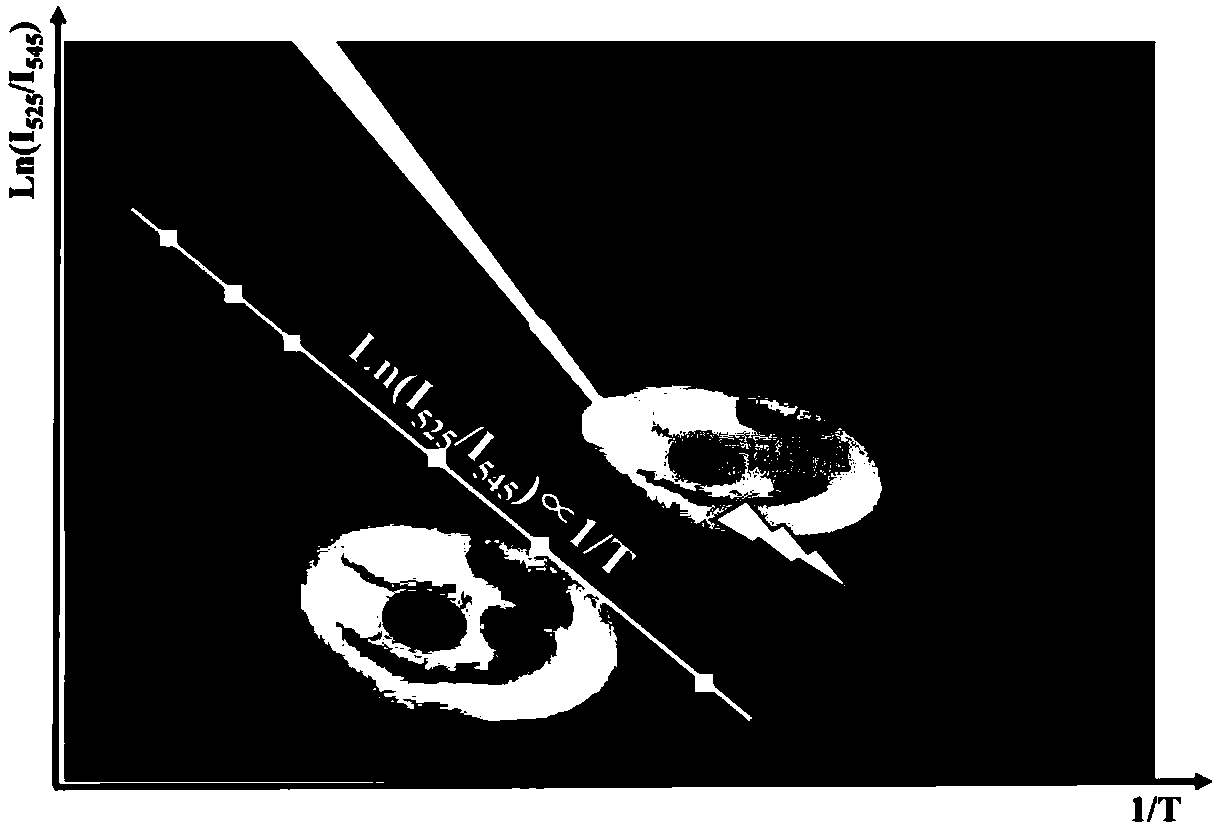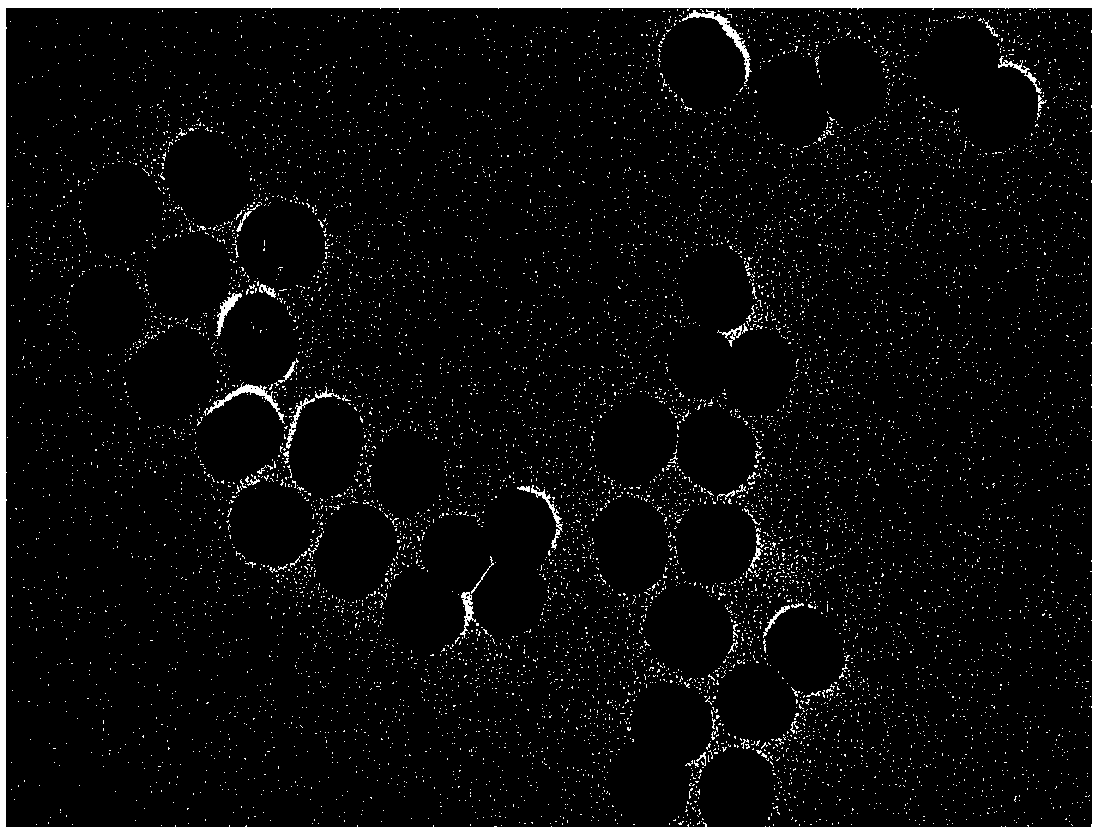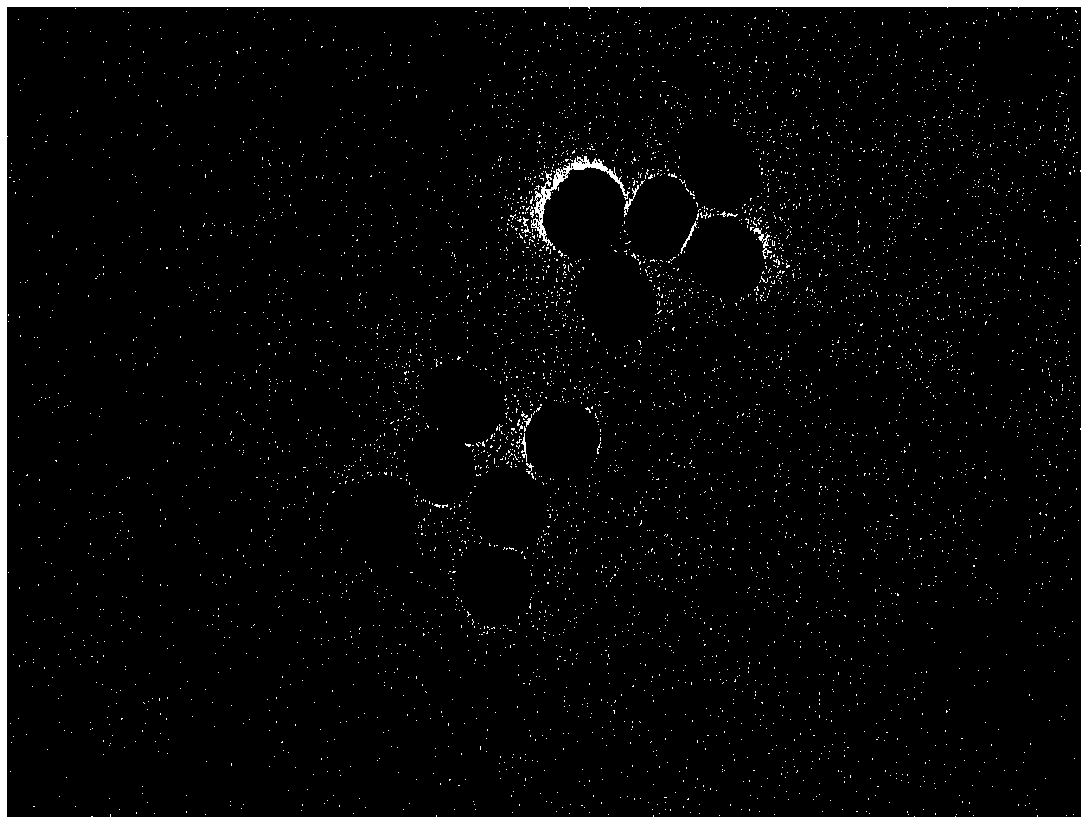Preparation method and application method of core-shell nanocrystal cell temperature sensor
A temperature sensor, core-shell nanotechnology, applied in the field of biosensing, to achieve the effects of low cytotoxicity, improved luminous efficiency, and good reproducibility
- Summary
- Abstract
- Description
- Claims
- Application Information
AI Technical Summary
Problems solved by technology
Method used
Image
Examples
Embodiment 1
[0035] 1. A method for preparing a core-shell nanocrystalline cell temperature sensor, the steps are as follows:
[0036] 1) Preparation of spherical NaYF with uniform size by thermal decomposition method 4 :Yb 3+ ,Er 3+ core nanocrystals, and then use the same method to wrap NaYF on the core nanocrystals 4 :Yb 3+ ,Nd 3+ The shell gets rare earth doped NaYF 4 Core-shell nanocrystals, the diameter of the core is 20-30nm, and the thickness of the shell is 10-15nm;
[0037] 2) Dissolve 2 mmol of the obtained core-shell nanocrystals in 2 ml of toluene by a traditional method, stir at room temperature for 3 hours at a stirring frequency of 500 rpm, and add 2 ml of dimethyl sulfide that dissolves 30 mg of dimercaptosuccinic acid (DMSA). In the sulfone (DMSO) solution, under the condition of a stirring frequency of 500rpm, magnetically stirred for 12 hours; the above sample was purified by dialysis for 3 days, and the pH was adjusted to 10.5 to obtain the hydrophilic phase NaYF...
Embodiment 2
[0042] 1. A method for preparing a core-shell nanocrystalline cell temperature sensor, the steps are as follows:
[0043] 1) Preparation of spherical NaYF with uniform size by thermal decomposition method 4 :Yb 3+ ,Er 3+ core nanocrystals, and then use the same method to wrap NaYF on the core nanocrystals 4 :Yb 3+ ,Nd 3+ The shell gets rare earth doped NaYF 4 Core-shell nanocrystals, the diameter of the core is 20-30nm, and the thickness of the shell is 10-15nm;
[0044] 2) Dissolve 4 mmol of the obtained core-shell nanocrystals in 2 ml of toluene by a traditional method, stir at room temperature for 5 hours at a stirring frequency of 1000 rpm, and add 2 ml of dimethyl sulfide dissolved in 40 mg of dimercaptosuccinic acid (DMSA). In the sulfone (DMSO) solution, under the condition of stirring frequency of 1000rpm, magnetically stirred for 10 hours; the above sample was dialyzed and purified for 2 days, and the pH was adjusted to 10 to obtain the hydrophilic phase NaYF 4...
Embodiment 3
[0049] 1. A method for preparing a core-shell nanocrystalline cell temperature sensor, the steps are as follows:
[0050] 1) Prepare spherical NaYF with uniform size by co-precipitation method 4 :Yb 3+ ,Er 3+ core nanocrystals, and then use the same method to wrap NaYF on the core nanocrystals 4 :Yb 3+ ,Nd 3+ The shell gets rare earth doped NaYF 4 Core-shell nanocrystals, the diameter of the core is 20-30nm, and the thickness of the shell is 10-15nm;
[0051] 2) Dissolve 2 mmol of the obtained core-shell nanocrystals in 2 ml of toluene by a traditional method, stir at room temperature for 4 hours at a stirring frequency of 700 rpm, and add 10 ml of dimethyl sulfide dissolved in 10 mg of dimercaptosuccinic acid (DMSA). In the sulfone (DMSO) solution, under the condition of a stirring frequency of 800rpm, magnetically stirred for 15 hours; the above sample was purified by dialysis for 4 days, and the pH was adjusted to 11 to obtain the hydrophilic phase NaYF 4 :Yb 3+ ,Er...
PUM
| Property | Measurement | Unit |
|---|---|---|
| diameter | aaaaa | aaaaa |
| thickness | aaaaa | aaaaa |
| concentration | aaaaa | aaaaa |
Abstract
Description
Claims
Application Information
 Login to View More
Login to View More - R&D
- Intellectual Property
- Life Sciences
- Materials
- Tech Scout
- Unparalleled Data Quality
- Higher Quality Content
- 60% Fewer Hallucinations
Browse by: Latest US Patents, China's latest patents, Technical Efficacy Thesaurus, Application Domain, Technology Topic, Popular Technical Reports.
© 2025 PatSnap. All rights reserved.Legal|Privacy policy|Modern Slavery Act Transparency Statement|Sitemap|About US| Contact US: help@patsnap.com



